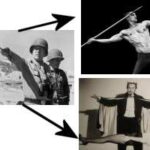I was teaching a course for a local small business support organization the other day. The fledging founders in the workshop had a wide array of business-size expectations, from part-time side hustles to much larger employee-based scalable businesses. As I was teaching some key principles of starting and operating a business, I realized that not all the concepts I discussed apply universally to every type of business. Entrepreneurship is such a broad topic that much of the content taught is not appropriate for many businesses or their founders, making it very difficult for people to know which information is relevant to them and which is not. When teaching entrepreneurship, lumping all businesses into the same group, regardless of size, ends up overlooking many unique needs and opportunities. So, I thought it was about time that I broke up the concept of entrepreneurship based on a small business continuum. My goal is to help individuals better understand the motives of the founders and leaders and demonstrate some of the different skills and knowledge required for each type of business along a continuum.
If I asked a hundred people to name a few entrepreneurs, the most popular names would no doubt be Bill Gates, Steve Jobs, Elon Musk, or Jeff Bezos. So, it is no surprise that when someone wants to scratch their entrepreneurial itch and start a new business, they would research how these celebrity CEOs created their business to emulate some of their lessons and learn the craft of entrepreneurship. However, many of the individuals associated with the founders of a large, successful business who remain at the helm throughout the transition from startup to large business are anomalies and outliers. In looking to learn from their journey, the newly minted entrepreneur is mistaken about the business lessons to model. Moreover, they are all running large businesses and not small ones anymore. Very few founders transition from founder to CEO of a large business. Depending on where you are on the small business continuum, not only does it require a different type of leader, but it also requires the business to have very different objectives and operate in different markets. A one-size-fits-all discussion of entrepreneurship provides undifferentiated information that serves not to educate but to confuse most people.
Recommend Post: 7 Business Growth Stages – What CEOs Need to Know
Essentially there are five types of businesses with several subtypes along the small business continuum.
Some companies on the small business continuum are startups, meaning they are still searching for a working business model. On the other hand, others are established businesses with successful business and economic models. For the record, I refer to any business that has yet to reach profitability as a startup. Once the startup reaches profitability, it transitions into a business.
Lifestyle Business
In a lifestyle business, the founder’s goal is to create a business where they can do just enough work to live their passion and make enough money to survive. The primary goal of a lifestyle business is to earn enough money to remain self-employed. Founders of lifestyle businesses have no interest in getting rich. They just want to earn enough money to feed their passion or self-employment goals.
Lifestyle entrepreneurs are most often skilled in a profession and sell their time to earn money to support their lifestyle. If you have a side hustle, you are a lifestyle entrepreneur. If you are a freelancer or operate a small family-owned business, you are a lifestyle entrepreneur.
Most lifestyle entrepreneurs are solopreneurs and operate as sole proprietor entities. However, some lifestyle businesses choose to be a Limited Liability Company (LLC) to give the consumer the impression that they are larger or more legit.
Lifestyle entrepreneurs are technicians first, as defined by Michael Gerber in the e-Myth, and business owners second. They spend most of their time working IN the business and little time working ON it, as most lifestyle entrepreneurs require few real business skills beyond basic marketing, sales, and accounting. Lifestyle entrepreneurs need only a basic understanding of business concepts to be successful, and they nearly always operate in a known business environment.
For some lifestyle entrepreneurs, the business itself is their passion project and is based around Ikigai to achieve personal fulfillment. For others, the business is just a way to earn enough money from a skill they have so they can pursue their passions outside the business.
Small Business
The spectrum that defines a small business is pretty broad. According to the Small Business Administration (SBA), employee and revenue sizes vary by industry but are often limited to 500 or fewer employees. According to smallbiztrends, the average number of employees in a small business is about ten. There is a very big difference between a business that employs ten people from one that employs hundreds.
At the time of this writing, the following pie chart breaks down all US small businesses by the number of employees:
Therefore, it is necessary to break the small business category into three subtypes.
Micro Business
According to Investopedia, a micro business is a class of small businesses with ten or fewer employees. Micro business entrepreneurs, like lifestyle entrepreneurs, primarily want to be self-employed. They have no real desire to become rich or to take over the world.
The goal of the micro business owner is to create a business so they can feed their family. Their primary business objective is to turn a profit each month. Founders of a micro business have no intention of creating real wealth and often work IN the business as well as ON it. Micro business founders are not serial entrepreneurs and often lead the same business for their entire working life.
Micro businesses are small employee-based businesses such as landscaping companies, plumbing contractors, machine shops, and small farms. Most micro businesses start out seeking a profitable business model to carve out a small, uncontested market to operate in so that they are not a commodity that must compete on price. Micro businesses work to generate brand recognition to create loyal customers.
Micro business entrepreneurs generally operate in a known business environment, but because they have employees, they require a higher level of business acumen and regulatory knowledge than lifestyle entrepreneurs, who are mostly solopreneurs.
Most micro businesses are organized as LLCs with a single owner. If a micro business has a partner, they are often family members, such as a spouse or siblings. However, if the owners require a government-issued professional license to pursue a particular vocation, the businesses are typically organized as PLLCs or Partnerships. More profitable micro businesses can organize as an S-Corp to shelter a portion of their profits from self-employment taxes.
SMB and SME Business
An SMB is a Small-to-Medium sized Business, whereas an SME is a Small-to-Medium sized Enterprise. Strictly speaking, the difference between SMBs and SMEs is blurred. In general, an SMB is associated with the service industry, while an SME is associated with the manufacturing industry.
Some common SMBs include restaurants, cafes, retail outlets, grocery stores, salons, and auto repair garages. SMBs use a mix of full-time and part-time employees to manage certain aspects of their business, and they frequently use third-party or outsourcing services to maintain their operations. Generally, SMBs have fewer than 100 employees and generate less than $10 million in annual revenue.
Some common SMEs include small-scale manufacturers, mining operations, spec home builders, transportation/warehousing facilities, and publishers. SMEs typically employ a full-time workforce and tend to be more vertically integrated to cover a wider range of activities. In general, SMEs have between 100 and 500 employees and generate between $10 million and $1 billion in revenue, according to Sales Results Inc.
Founders of SMBs and SMEs are generally looking to earn more than a basic living from the business. Their goal is often to create a business that will outlive them. They frequently have partners outside of family members to help fund the startup and provide a broader skills base.
Since SMBs do not require millions of dollars to get started, they are usually not funded by outside equity partners. They are closely held by only a few individuals, who are often also employees of the business. That said, most SMBs organize as LLCs or S-Corps.
SMEs commonly need a little more capital to start and operate and are more likely to seek some level of outside investment. Therefore, SMEs are frequently structured as S-Corps or, in some cases, as C-Corps if they require larger amounts of outside risk capital.
Entrepreneurs in their 40s and 50s coming out of larger companies typically start SMBs and SMEs. These founders are starting a business in an industry they know and where they have network connections.
Founders of SMBs and SMEs love the business aspects and work ON the business rather than IN it. As a result, founders of SMBs and SMEs require a much higher level of business acumen than lifestyle or micro businesses. The CEOs of SMBs and SMEs tend to possess more hunter traits, such as problem-solving, tenacity, and the ability to steer in the fog. They also hold a parental instinct to take care of their flock of employees.
Moreover, SMBs and SMEs also require Presidents with more farmer traits to execute the CEO’s visions, such as budgeting, standardization, and measuring the progress on key performance indicators.
Buyable Small Business
A buyable business is not just a bigger version of an SMB or SME. It is rather a type of SMB or SME. While many small businesses are created to generate income for the founders and owners, some SMBs and SMEs are just transitional businesses with an exit strategy goal baked in from the beginning. Founders of buyable businesses build a business that they hope to sell to another business to create a windfall income for the owners. Serial entrepreneurs build buyable businesses; that is what makes them serial entrepreneurs.
I founded Horizon Interactive, my first employee-based business, with two partners as a buyable business. From the very beginning, we had an exit strategy to be acquired once we reached a scale that would interest a private or public company. As it turned out, we were acquired by Interleaf, a public company out of Boston, after about five years of growing our company.
Up to this point on the small business continuum, most businesses were self-funded by the founder or with the help of partners or family members. From this point on, most companies along the small business continuum will require outside capital.
Scalable Business
The transition from a small business to a scalable business along the small business continuum is a major step that requires many new skills from the founder. The founder of a scalable business is a true hunter and creator-type entrepreneur. Founders of scalable businesses have billion-dollar visions for their companies from the outset.
A scalable business attracts outside investment in the form of angel or venture money. Angel investors and venture capital funds make risky bets to earn obscene returns on their capital. 90% of their investments will fail; however, for the 10% who succeed, their returns more than make up for the investments lost in the 90% who fail.
Scalable businesses are often associated with Silicon Valley startups, sometimes called high-growth companies. Scalable businesses are risky because they often enter a market where little is known about the customers or features that will ultimately resonate with and be valued by customers.
Like many startups, scalable businesses are looking for a successful business model. Most of them will never find them because they are looking for markets with a huge Total Available Market (TAM) so they can generate one hundred million dollars or more in annual revenue. Often when you hear the term “Startup,” this is what the person means. Scalable businesses are what most books about business discuss and what most colleges and universities teach entrepreneurial students. However, scalable businesses are one of the rarest types of businesses, yet they get the most attention.
Many founders dream of becoming the CEO of this type of business. Unlike founders of a buyable business who want to build a business that they can sell to a larger business; scalable business founders see themselves heading one of these large and successful companies.
Unfortunately, the ugly untold truth is that if you are the founder of a scalable business, you will likely not be around long enough to become the CEO, even if you defy the odds and start to see success.
Founders of scalable businesses are great at searching for that scalable and repeatable business model. These founders do not come from the ranks of technicians, as is the case with many small businesses.
The day the founder announces to the board of directors that they have found a scalable business model, they think the board will pin a medal on their chest. However, the investors on the board think, “This is the 10% of businesses I’ve been looking for.”
When you discovered that scalable business model, you just became an important part of the investor’s portfolio. Up to this point, you were just a number to your investors. However, once you hit a scalable business model, investors start questioning whether you are the right person to keep it going. Investors know that the skill sets necessary to grow the business to its full potential are very different from those that got you here.
The hunter and oracle attributes that make for a great founder of a scalable business become liabilities when it comes to scaling. With a scalable business model, it is time to execute at scale, requiring a very different kind of leadership. To scale with a successful business model requires a farmer or general to take it to the next level.
Steve Jobs, Bill Gates, Elon Musk, and Jeff Bezos are anomalies. While these guys get all the headlines, it is not how it works in the real world. Few founders of scalable businesses make the transition to become CEOs of large businesses because the skills and leadership required are so different.
Scalable businesses organize as C-Corps to account for external investors.
Large Business
Up to this point in the small business continuum, the founder discovered a scalable and repeatable business model. While Startups, by definition, are temporary, at some point, many of these startups become profitable companies. Many founders remain at the helm of profitable but small companies; however, many large companies outgrow their founders and require new leadership to helm the business. Professional CEOs and not founders run large businesses.
Whenever I hear clients say they have an MBA or want to earn one to be a better business owner, I feel it important to remind them that MBA skills are most valued for scalable and large businesses. On the other hand, much of what MBA programs teach is of little value when it comes to starting and operating a small business.
Large companies follow a basic evolution. Every large company started as a small business. Visionaries, which I call the Oracles, started them. As the company evolved and grew, the Oracle was no longer well-suited to lead the business. A General replaced the Oracle founder, who is less visionary and more of a business development person.
In some cases, the Oracle pairs up with a General as the business scales toward becoming a large business. Think Gates and Allen, Jobs and Wozniak. Although the General may be the supreme leader of the company as the business grows and evolves, they leave the realm of small business to enter the world of large business.
In a large business, leadership is split as multiple divisions are added to the mix, giving rise to what I call Athletes and Performers who have special skills that the company needs.
Unless the company continues to invest in innovation by funneling discretionary income into R&D efforts or acquiring buyable companies for their technology or human capital, the large business switches from an offensive posture to one of defense. Large companies with a defensive posture hire a Guardian to take the helm to sustain the business for as long as possible until its ultimate demise.
I do not consider the leaders of large companies as entrepreneurs. Entrepreneurs organize and operate a business taking greater than normal financial risks. Leaders of large companies are not risk-takers. They have grown accustomed to the lifestyle of being a high-paid executive and will do just about anything to keep the money train going. I only included large companies in the small business continuum to bring it to its natural end.
Social Impact Business
However, before I can end a discussion about a small business continuum, there is one other type of company that needs consideration: the social impact business. A social impact company can occur anywhere along the small business continuum. The goal of the founder of a social impact company is not to make money but to apply their talents to change the world by solving social problems. Social impact companies are different from companies, such as Johnson & Johnson, Google, Coca-Cola, and Ford, that incorporate Corporate Social Responsibility (CSR) into their business models.
Social impact companies have their higher purpose built into the very heart of their business model. Providing a social impact is an essential part of the “DNA” of a social impact business. There are three types of social impact companies.
Social Enterprise
A social enterprise is a mission-driven business that exists to solve a social issue. A social enterprise can be either a non-profit or a for-profit organization that uses the powerful economic engine of capitalism to solve a social or environmental problem. A social enterprise directly impacts the issues that they seek to solve. Bombas and Warby Parker are examples of social enterprises since they each embrace the “One Purchased = One Donated” model.
Social Business
A social business can be a for-profit or non-profit that combines a social and commercial goal to accomplish its social impact. The subtle yet significant difference between this type of business and a social enterprise is that a social business generates revenue, raises awareness for a social issue, and donates all its profits to the cause it supports. Newman’s Own is an example of a social business whose objective is to donate 100% of its after-tax profits to the Newman’s Own Foundation to support children, their families, and their communities.
Conscious Capitalism Business
A conscious capitalism business is a for-profit organization that fully embodies the stakeholder model vs. the shareholder model. These businesses believe that focusing on a higher purpose can create more value for communities, the environment, employees, and their supply chain, while still realizing profits for their shareholders. Costco, Trader Joe’s, and Starbucks are three examples of conscious capitalism businesses since they treat their employees well and support values such as diversity and inclusion.
Conclusion
Not all entrepreneurship concepts are universally applicable to every business. Entrepreneurship is such a broad topic that much of the content accessible to new business owners is inappropriate for them. For a business to model the behaviors of a different type of business on the small business continuum will cause more harm than good. Therefore, when it comes to understanding the skills and knowledge that a founder needs, it varies greatly based on the type of business they are creating and where that business is on the small business continuum.
Founders should understand where they lie on the small business continuum to help them determine how valuable any entrepreneurship concept is to them. Unfortunately, all the information about entrepreneurship is so commingled that it is hard for an entrepreneur to determine what is important and what is not. Moreover, what we teach people about entrepreneurship can also appear contradictory at times because the scale of the business is not made very clear.
Where on the small business continuum does your business lie, and what entrepreneurship concepts should you focus on?









